We arrived in Jaisalmer via overnight train from Delhi feeling a bit grungy and tired after the nineteen hour journey. Our group of seven travelers plus our guide piled into three different tuk-tuks (auto rickshaws) with our luggage and headed to the Deepak Rest House. Jaisalmer is a city in India’s Rajasthan state which is known as the Golden City. Our small guesthouse was located inside the ancient Jaisalmer Fort which was built in 1156. The fort is like a walled city within the larger city and contains a royal palace, numerous ornate Jain temples, homes, shops, restaurants, and guesthouses. There are an assortment of buildings inside the fort made of sculpted sandstone and their facades are works of art. The alleys inside the fort are too narrow for cars but many motorbikes still manage to whiz around inside and there are often cows wandering about on their own.
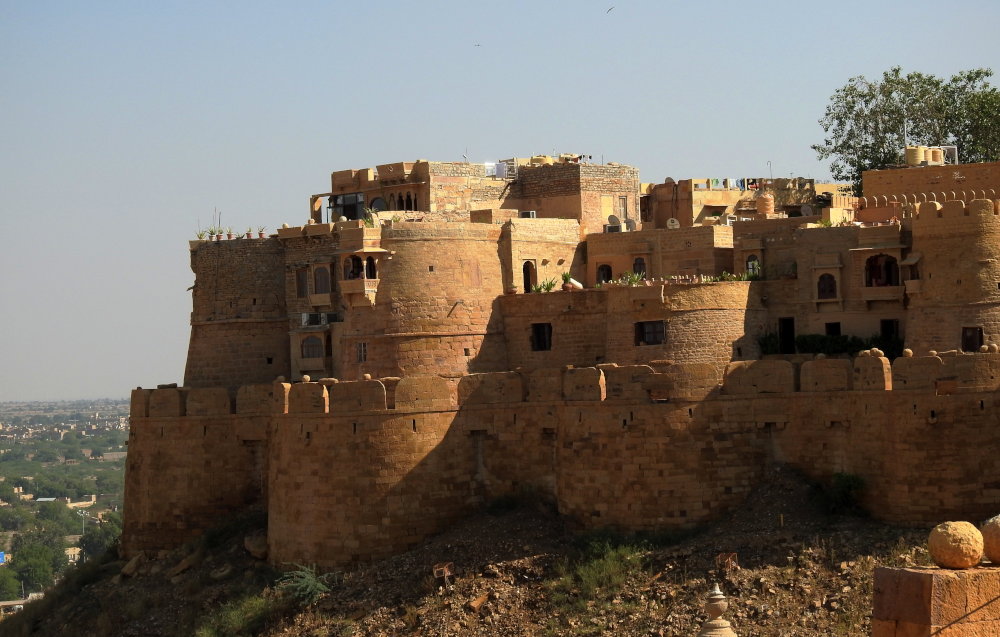
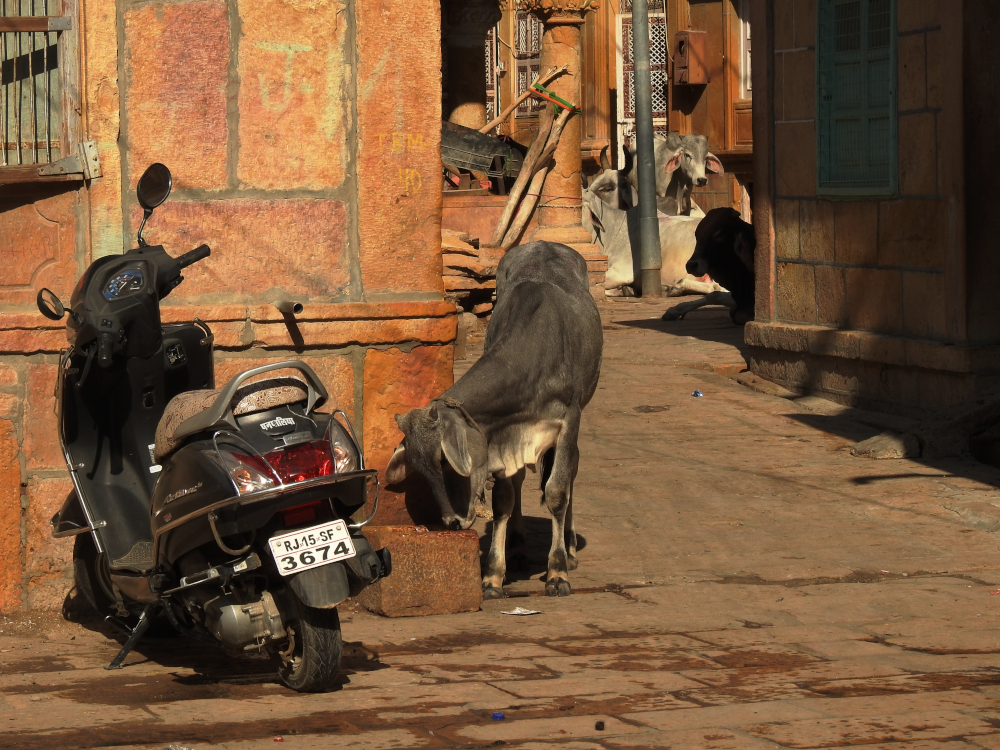
After having a shower at the hotel and packing a small overnight bag we piled into a jeep and headed toward the desert for an overnight camel safari in the nearby Thar Desert. I was hesitant to participate in the camel riding part of this activity because I am leery of animals being used for tourism but our tour leader assured us that the local family that ran the camel safari treated their camels like family members and that they were always well cared for so we decided to go ahead with it. At a meeting point we climbed on our camels, which did look healthy and well cared for thankfully, and headed out into the desert. We saw many electricity-generating windmills dotting the Thar Desert landscape along the way.

My camel was named Shakira and she was a total sweetheart and quite gentle. I found the ride to be pretty comfortable although some in our group did not feel the same. It took about ninety minutes to reach our camping spot, which was on top of a sand dune with some cots set up and not much else. We had a nice dinner prepared by the gentlemen that run the camel safari and then enjoyed a beautiful desert sunset.
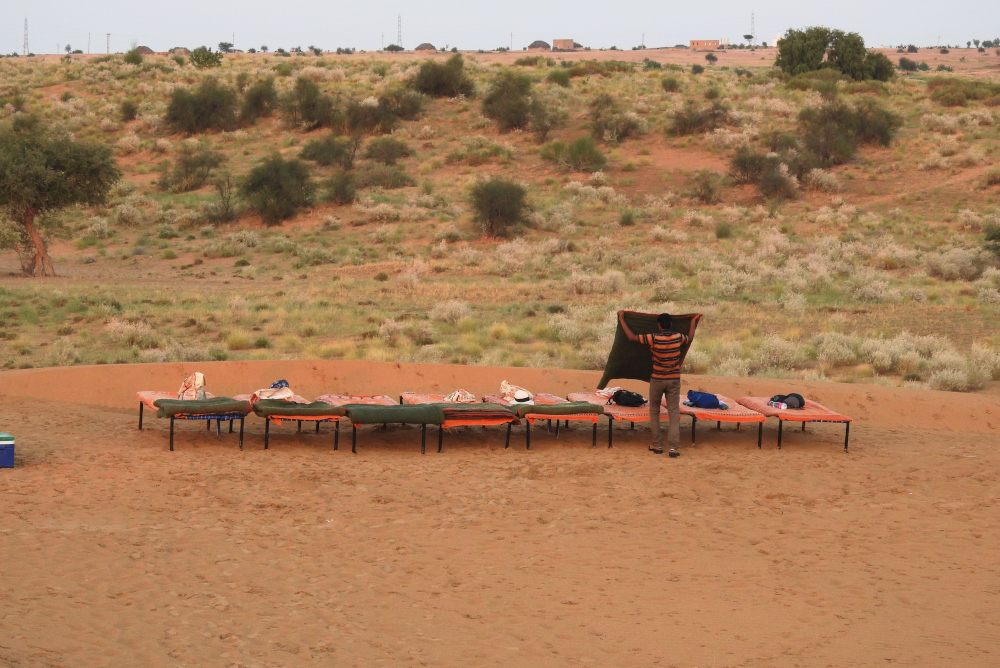

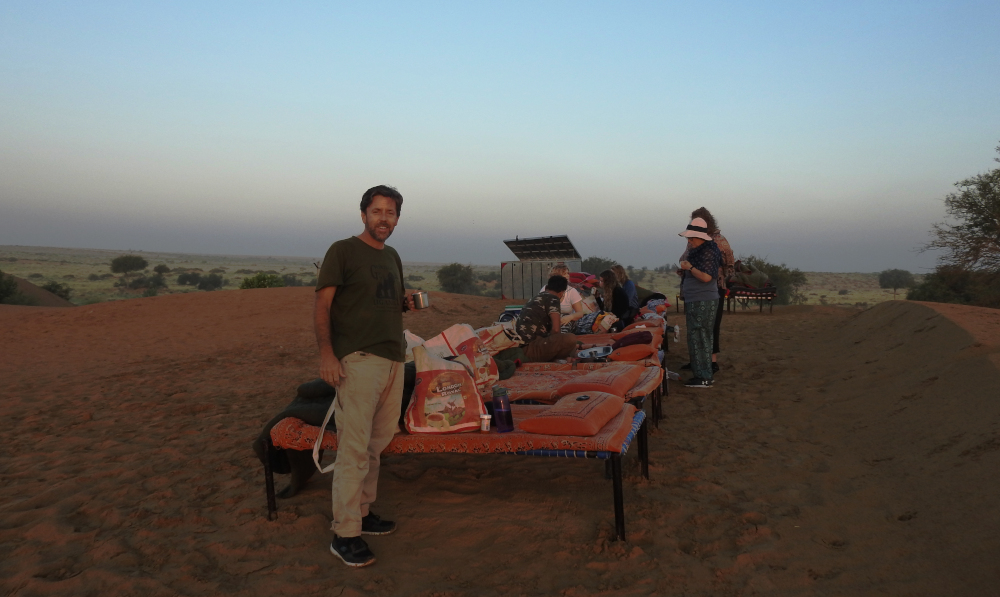

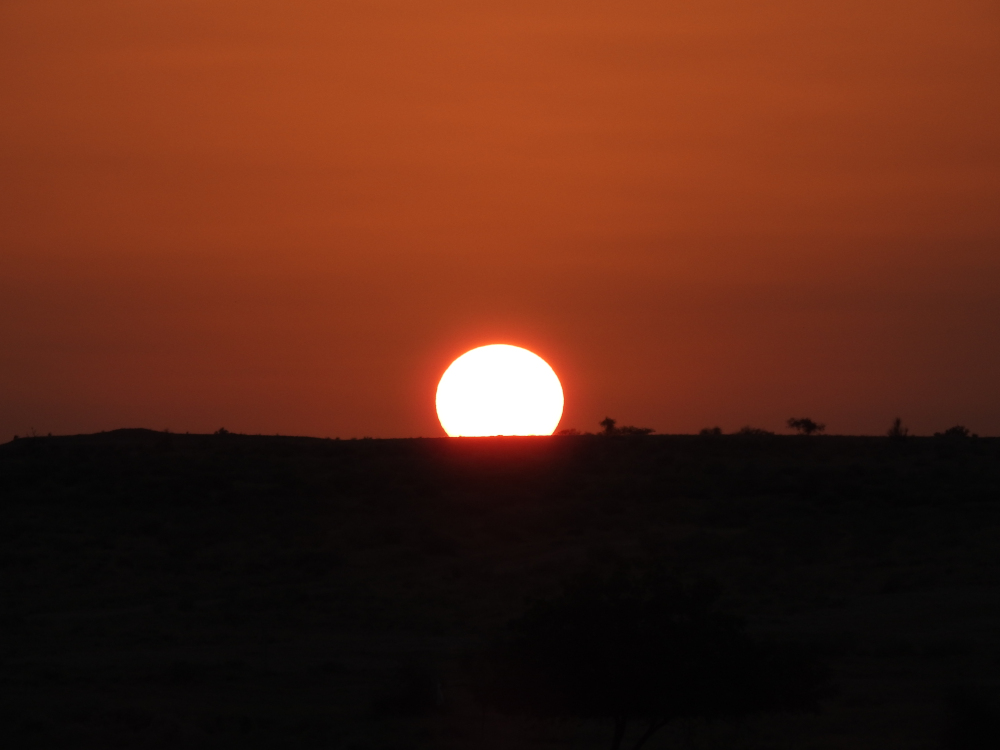
After a little dance party we went to sleep on cots out in the open under the clear sky with so many stars. It was a lovely evening of sleeping outside. The camels relaxed at the campsite and slept there along with us as well.

In the morning we had breakfast in the desert then went by jeep to Kuldhara, which is the site of an abandoned village that was established around the 13th century and abandoned sometime in the 19th century. We were told some locals believe the site is both cursed and haunted. Today it serves as a heritage site with restoration work and the construction of visitor facilities underway.
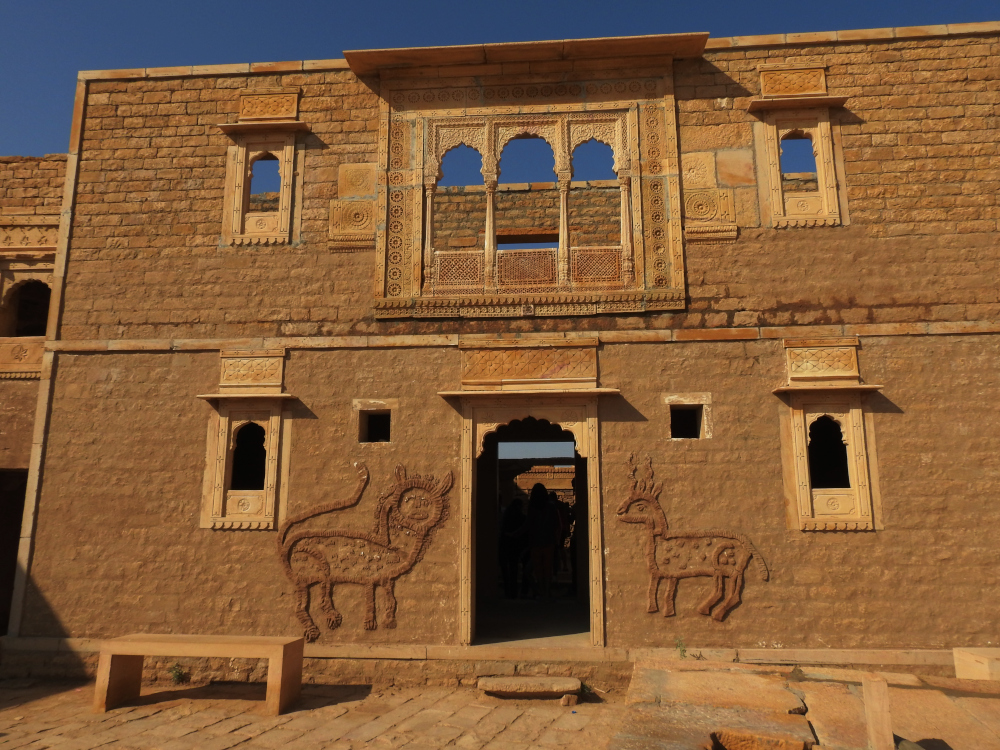
We spent a few more days in the city of Jaisalmer exploring the Jain temples, checking out the assorted shops, and dining at some of the many rooftop cafes. One evening our hotel prepared a lovely buffet dinner of Indian food for our group and provided traditional clothing for us to wear for the evening (pictured at the top of this page). The women wore colorful saris and Rob being the only male in our group wore a turban and loose fitting shirt and pants set, which looked extremely comfortable. Local women helped the ladies get dressed which was quite helpful as I found the sari to be rather complicated to assemble properly. We dined in our outfits on the rooftop and enjoyed the beautiful sunset view of the city.


From Jaisalmer we headed to the city of Jodhpur which we reached via an eight-hour train trip that began around 7:30 am. For most of the ride Rob and I shared a train compartment with some Indians who spoke limited English but were friendly and kind offering us some of their home cooked food they brought for the train journey. From the Jodhpur train station we went straight to Jagat Vilas Homestay, a family run accommodation with around a dozen rooms situated around a lovely courtyard. The homestay prepared an outstanding lunch for us which included dahl, cabbage salad, roasted potatoes, rice, and roti served in a charming dining room decorated with antiques and family photographs.

While in Jodhpur we explored the Mehrangarh Fort, Ghanta Ghar, and enjoyed a rooftop dinner with beautiful views of the city and the Umaid Bhawan Palace, which today is partly a luxury hotel and partly a museum in addition to being the residence of the former Jodhpur royal family.

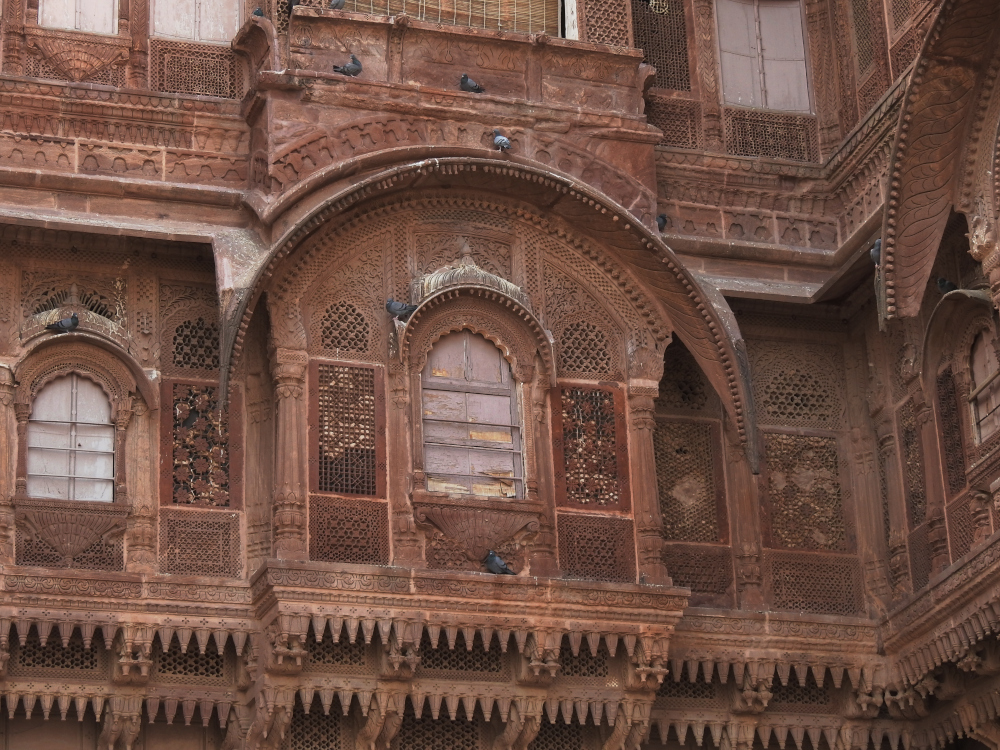
Mehrangarh Fort was once a palace and is now a large museum. From there we enjoyed nice views of the section of Jodhpur were most buildings are painted in shades of blue, the source of the nickname “the Blue City.”
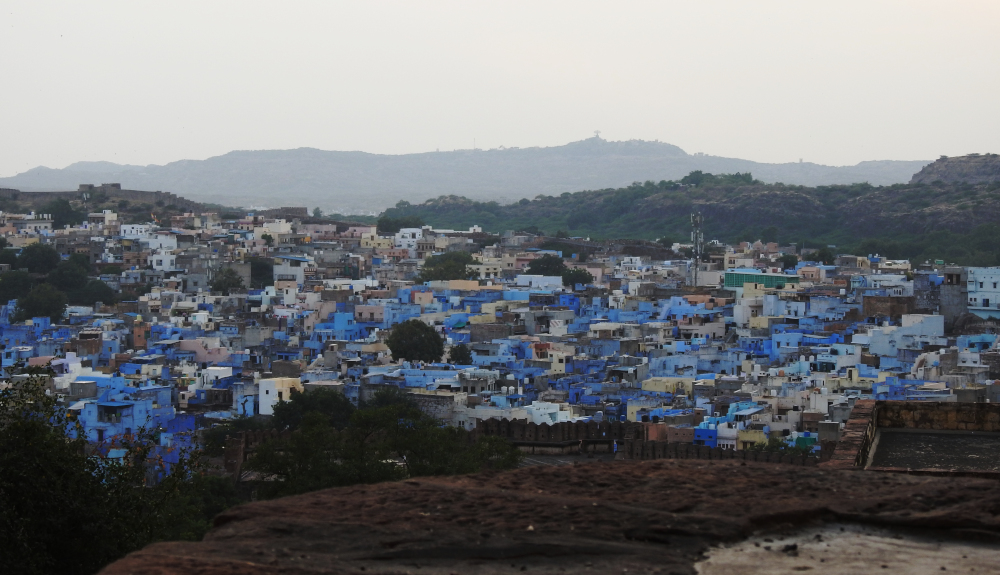

Ghanta Ghar is an area centered around the town’s clock tower featuring a large bazaar and many cafes. We found the selling tactics in this area to be quite aggressive and there was also a great deal of begging happening all around especially by children which was heartbreaking.
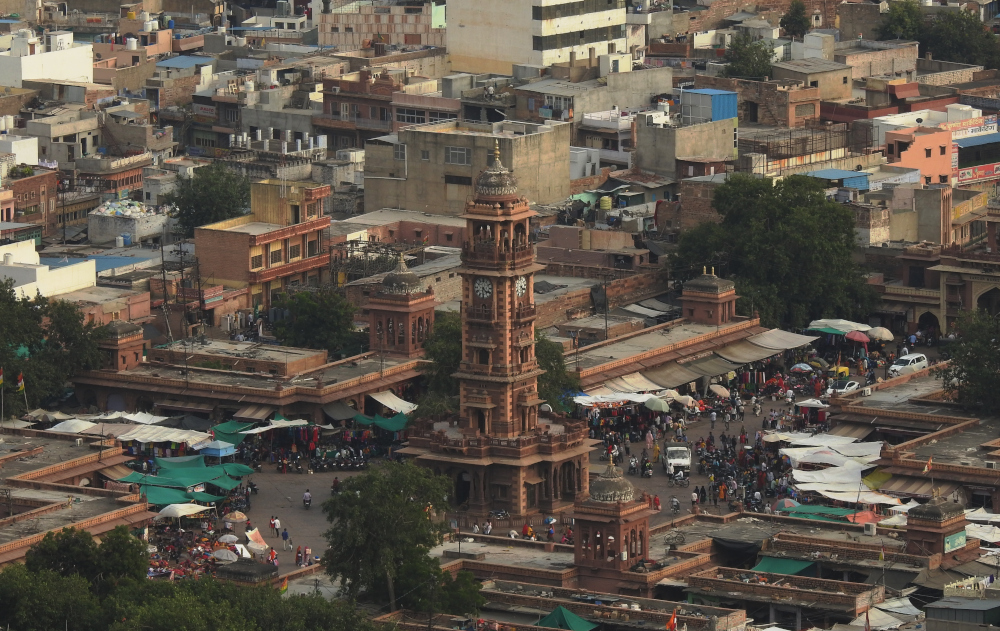
Our Intrepid Travel guide, who is a native of Delhi, has asked us to please not give anything to street beggars in India regardless of their age. He believes the day people stop supporting begging will be the day there are no more beggars on the streets. Our guide explained that free school is available to all children in India and that any children begging in the street have probably been put up to it by adults who do not have the children’s best interest at heart. It could be their parents or someone else who uses children to make money by sending them out to beg on the street in exchange for feeding or housing them. Children have even been abducted and forced to beg in the streets by adults they do not know, a practice we obviously would never want to support. There are resources for food and shelter available for needy adults also according to our guide. Although I want to buy the children a meal and give them money, instead I give them a smile and say something kind so they know I see them and feel for them but firmly let them know I can’t give them anything. It is extremely hard. I am sure it’s also a much more complicated issue than I can even begin to understand but I have chosen to trust our guide’s advice.
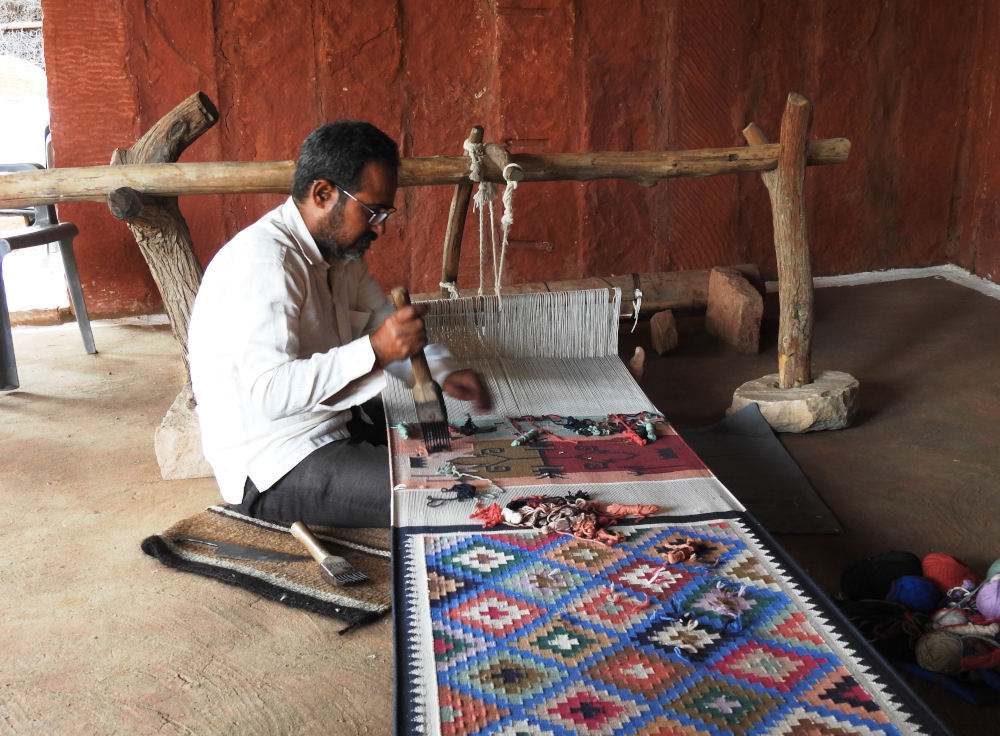
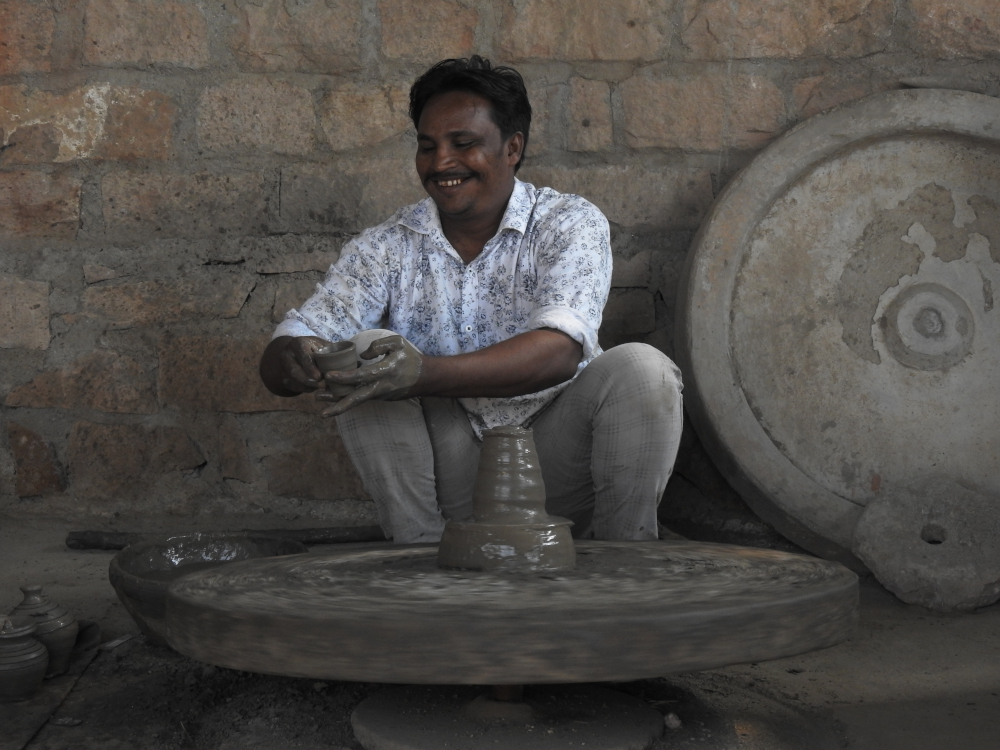
From Jodhpur we also took a morning excursion with our guide to Bishnoi village outside of the city where we learned about the local culture and watched demonstrations of pottery and gorgeous rugs being made meticulously by hand on a loom. The Bishnoi people are well known in India for their passionate protection of nature and the environment. They are all vegetarians and do not allow hunting of animals or cutting down trees on their land. We saw antelope, peacocks, cows, cranes, and black bucks as we traveled around the area in a jeep. It was a pleasant way to spend the morning away from the hustle and bustle of the city.


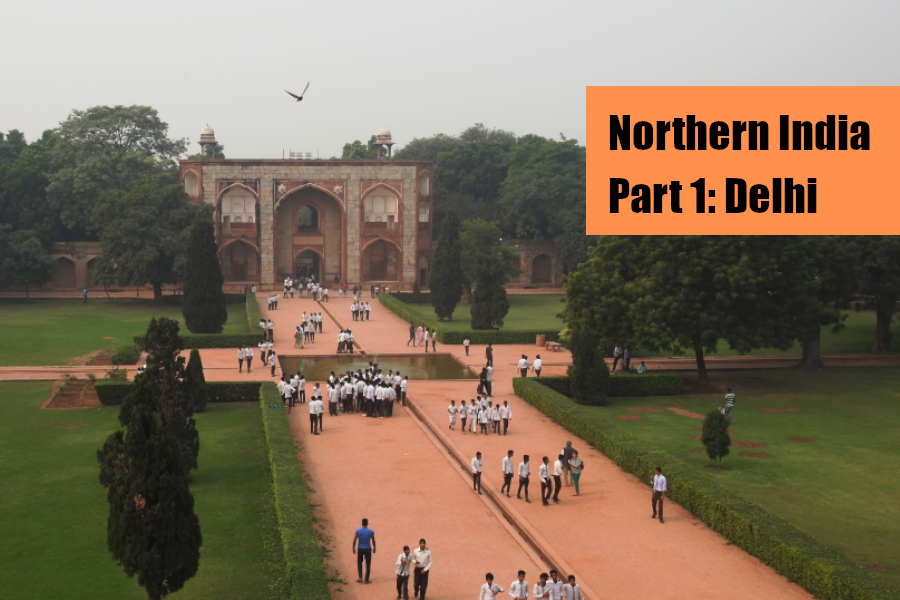
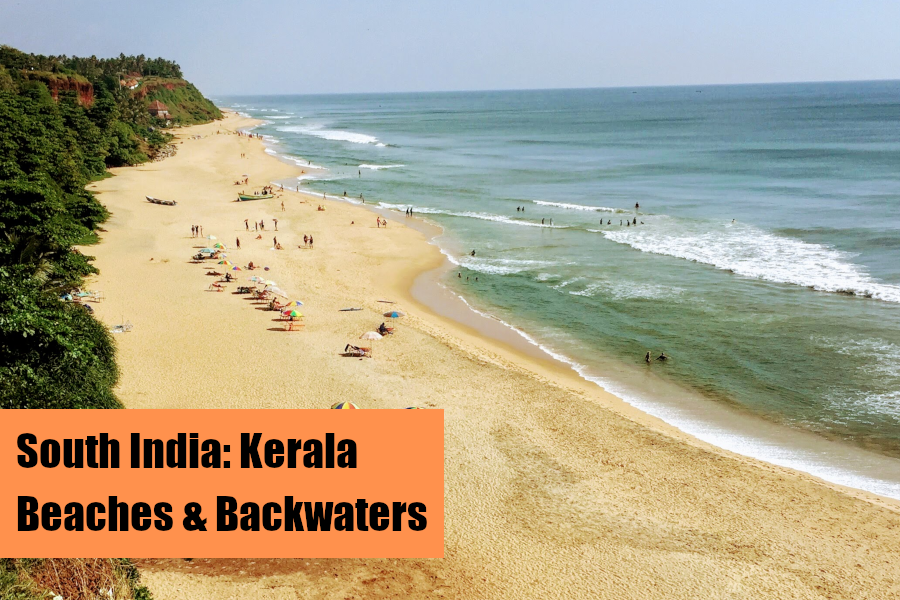
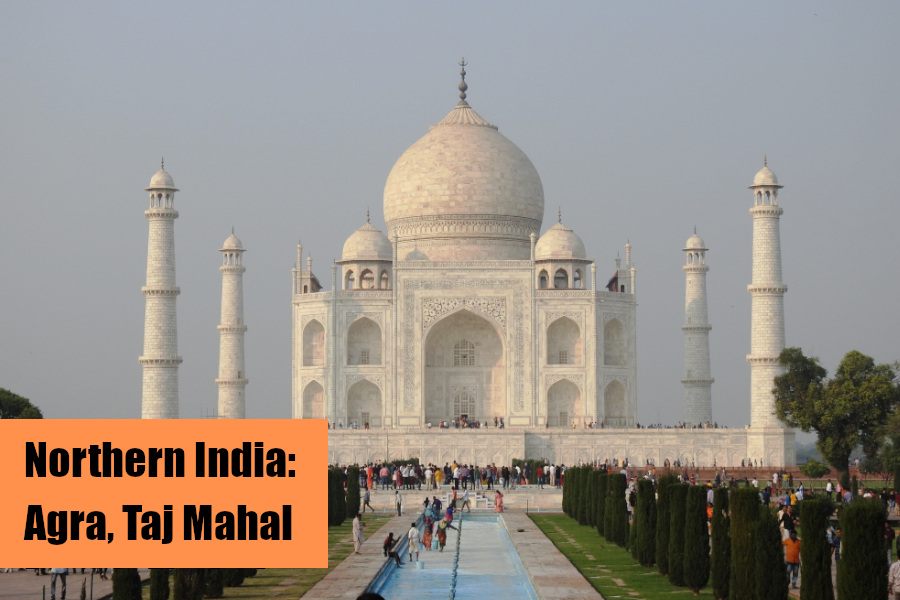
Fascinating commentary of your Indian experiences! Love all the beautiful photographs.
Hello, thanks for sharing such a good information.
Will be waiting for your next….
Check this out:-
https://www.jcrcab.com/taxi-in-jaisalmer/
Thanks.